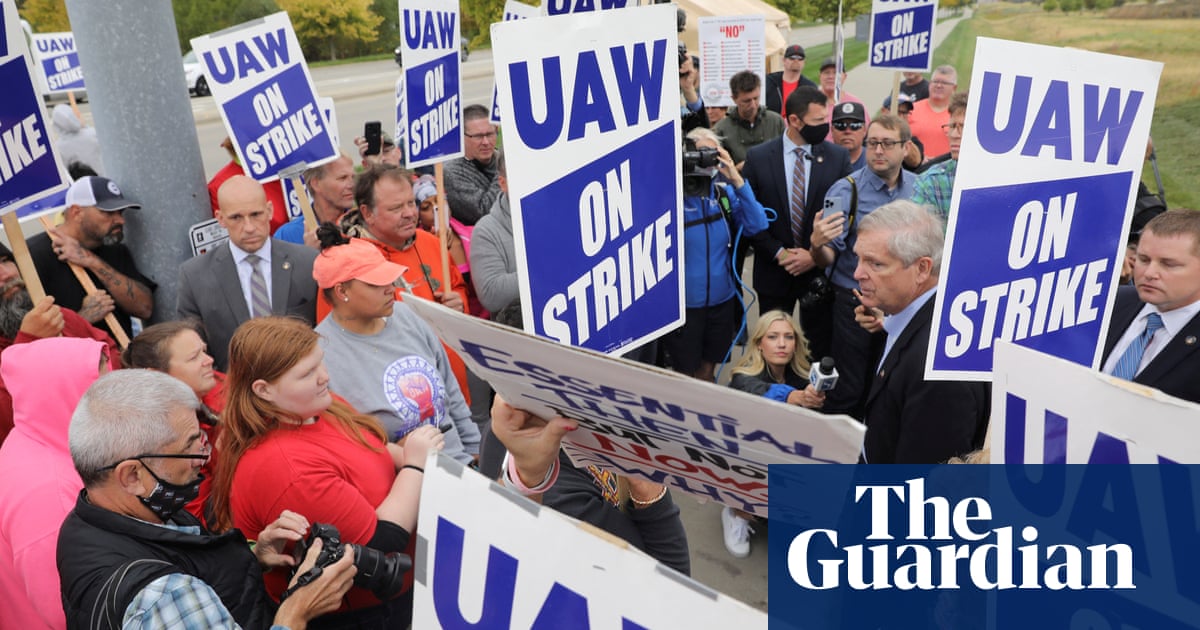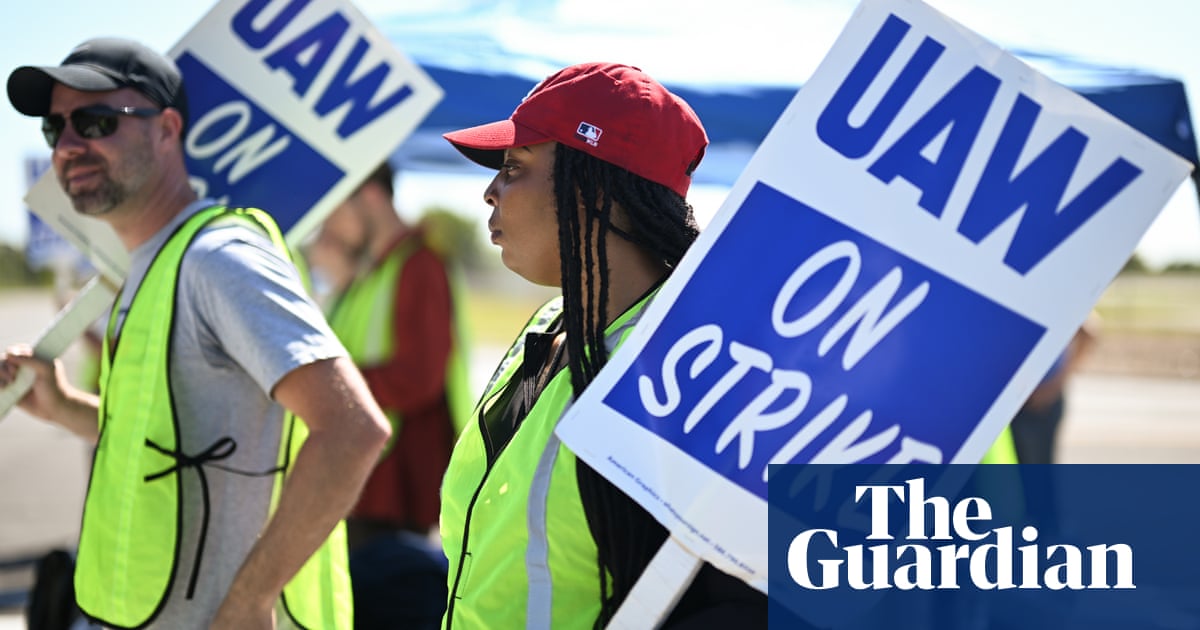
US autoworkers and the big three US vehicle makers were in a race against time on Thursday to stop the industry’s biggest strike in generations.
With the White House pushing for a resolution, the United Auto Workers (UAW) and the car companies still appeared far apart as a midnight deadline to agree to a new union contract approached.
If the UAW and the car companies, General Motors, Ford and Stellantis, fail to reach agreements for 150,000 workers, thousands could walk out on Friday in planned “stand up” strikes aimed at individual auto plants. It would be the first time workers at all three auto companies have gone on strike.
Under the planned strike strategy, autoworkers would strike suddenly at targeted, individual plants, with additional locations following to pressure the automakers to come to an agreement at the bargaining table. A rally is planned with the UAW and Senator Bernie Sanders in Detroit on Friday to kick off the looming strikes.
A recent Morning Consult survey found US adults would support the autoworkers’ strike by a two to one margin.
The White House weighed in on the talks on Wednesday. The White House economic adviser Jared Bernstein said Joe Biden had “encouraged the parties to stay at the table and to work 24/7 to get a win-win agreement that keeps UAW workers at the heart of our auto future”.
Asked whether Biden would bring in negotiators or be more actively involved, Bernstein said “the president’s been very much engaged”.
Negotiations have been strained. At the start of talks, the UAW president, Shawn Fain, refused to participate in a handshaking ceremony with the car company CEOs that has been a ceremonial part of negotiations for decades.
“They could double our wages, not raise car prices and still make billions of dollars in profit,” said Fain during a live stream on Wednesday evening, in which he detailed the distance between the union’s demands and most recent proposals from the automakers. “The big three can afford to immediately give us our fair share. If they choose not to, they are choosing to strike themselves and we are not afraid to take action.”
General Motors, Stellantis and Ford have said in statements they continue to negotiate with the union.
A spokesperson for Ford said in an email, “Our focus is on reaching a deal that rewards our employees, allows for the continuation of Ford’s unique position as the most American automaker and enables Ford to invest and grow. We are developing responsible contingency plans in the case of a work stoppage.”
Stellantis has also cited contingency plans in preparation for a possible strike.
“We’ve gotten to this point because workers have given up so much in the past 15 years since the bailouts and recession,” said Marcie Pedraza, an electrician at a Ford plant in Chicago, Illinois, for over 20 years. “Every contract it seemed little by little the companies just wanted to take more away and we gave more and more. We as workers are giving our labor, our blood and sweat and tears and so on, the companies just keep taking from us and not giving back what workers gave in concessions.”
Since the 2008 economic recession, General Motors, Stellantis and Ford have reported tens of billions in profits, including $21bn in profit in the first six months of 2023.
The United Auto Workers is asking for a 46% wage increase over a four-year contract, in line with recent salary increases for the CEOs of the automakers and a focus on ensuring the transition to electric vehicles includes good, union jobs. The union has noted wages for workers have stagnated, with average wages having decreased 30% over the past 20 years with inflation taken into account.
“They have the money, they just don’t want to pay their fair share or what we deserve,” Pedraza added. “Nobody wants to go on strike, right, because it’s going to hurt us too, it’s going to impact our lives and our livelihood. Even though we do get strike pay, it doesn’t compare to what we make when we’re working full time. But we know, as workers, that all we have to bargain with is our labor.”












